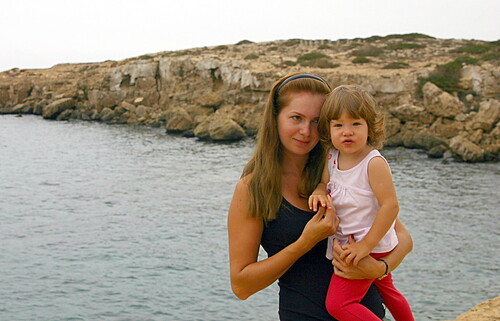 Choosing an attorney to represent you in a divorce proceeding at first may sound fairly straightforward. Too often I see this critical step not being given the attention it deserves. Sometimes it is simply a friend, relative or co-worker who refers someone who they felt or heard was good. While everyone means well, I suggest they probably don’t know what your goals and interests are for your divorce. They don’t know if a particular attorney is a good fit for you.
Sometimes a client will find the first attorney who tells them what they want to hear. This often is a big red flag. Ultimately, only you will be able to decide who the best fit may be for your circumstances. I hope this three part series of posts on the importance of choosing an attorney, issues to consider when choosing an attorney, and finally some questions to ask a divorce attorney, will provide you with some valuable insights.
I believe choosing an attorney is the third most important decision you will make on your journey to get unmarried. Remember in The first post of “Getting Unmarried” the most important decision is deciding to get unmarried in the first place. In Part II, I wrote the second most important decision is to research and decide “How to get unmarried;” essentially deciding on the divorce process that you feel–and hopefully your spouse feels–will accomplish the goals you both want to achieve.
The third most important decision I’ll cover in this first of a three part series will be on the importance of choosing an attorney for yourself and equally as important if not more important is who your spouse decides to hire as an attorney. But let’s put first things first. In my way of thinking, you can’t begin to choose an attorney until you first, decide to get unmarried and, secondly, decide what type of divorce process you and your spouse want to use.
Provided you have made these first two decisions, let’s make an assumption that both you and your spouse will want an attorney. If you have children from your marriage and or have significant assets and/or liabilities to ultimately allocate between you and your spouse in a property settlement, I strongly encourage everyone with these circumstances to be represented by an attorney. Let me disclose here, I am not an attorney. Too many do it yourself divorce packages often result in repeated appearances in court and end up being significantly more costly to the clients down the road. Leaving it to guesswork or not giving your property settlement the attention it deserves can be costly. Remember your marriage may not last forever but your property settlement will.
If you have children let me share this quote by Neil Postman, an American writer and professor, with you. “Children are the living messages we send to a time we will not see.” When children are involved they will be watching closely for the messages you and your spouse send to them about your divorce. They will live and carry those messages throughout their lifetime.
For these reasons, give careful and thoughtful consideration to the process you choose for your divorce and the attorneys both you and your spouse end up hiring. In the second part of this series, I outline important issues to consider when choosing an attorney.
Choosing an attorney to represent you in a divorce proceeding at first may sound fairly straightforward. Too often I see this critical step not being given the attention it deserves. Sometimes it is simply a friend, relative or co-worker who refers someone who they felt or heard was good. While everyone means well, I suggest they probably don’t know what your goals and interests are for your divorce. They don’t know if a particular attorney is a good fit for you.
Sometimes a client will find the first attorney who tells them what they want to hear. This often is a big red flag. Ultimately, only you will be able to decide who the best fit may be for your circumstances. I hope this three part series of posts on the importance of choosing an attorney, issues to consider when choosing an attorney, and finally some questions to ask a divorce attorney, will provide you with some valuable insights.
I believe choosing an attorney is the third most important decision you will make on your journey to get unmarried. Remember in The first post of “Getting Unmarried” the most important decision is deciding to get unmarried in the first place. In Part II, I wrote the second most important decision is to research and decide “How to get unmarried;” essentially deciding on the divorce process that you feel–and hopefully your spouse feels–will accomplish the goals you both want to achieve.
The third most important decision I’ll cover in this first of a three part series will be on the importance of choosing an attorney for yourself and equally as important if not more important is who your spouse decides to hire as an attorney. But let’s put first things first. In my way of thinking, you can’t begin to choose an attorney until you first, decide to get unmarried and, secondly, decide what type of divorce process you and your spouse want to use.
Provided you have made these first two decisions, let’s make an assumption that both you and your spouse will want an attorney. If you have children from your marriage and or have significant assets and/or liabilities to ultimately allocate between you and your spouse in a property settlement, I strongly encourage everyone with these circumstances to be represented by an attorney. Let me disclose here, I am not an attorney. Too many do it yourself divorce packages often result in repeated appearances in court and end up being significantly more costly to the clients down the road. Leaving it to guesswork or not giving your property settlement the attention it deserves can be costly. Remember your marriage may not last forever but your property settlement will.
If you have children let me share this quote by Neil Postman, an American writer and professor, with you. “Children are the living messages we send to a time we will not see.” When children are involved they will be watching closely for the messages you and your spouse send to them about your divorce. They will live and carry those messages throughout their lifetime.
For these reasons, give careful and thoughtful consideration to the process you choose for your divorce and the attorneys both you and your spouse end up hiring. In the second part of this series, I outline important issues to consider when choosing an attorney.  Choosing an attorney to represent you in a divorce proceeding at first may sound fairly straightforward. Too often I see this critical step not being given the attention it deserves. Sometimes it is simply a friend, relative or co-worker who refers someone who they felt or heard was good. While everyone means well, I suggest they probably don’t know what your goals and interests are for your divorce. They don’t know if a particular attorney is a good fit for you.
Sometimes a client will find the first attorney who tells them what they want to hear. This often is a big red flag. Ultimately, only you will be able to decide who the best fit may be for your circumstances. I hope this three part series of posts on the importance of choosing an attorney, issues to consider when choosing an attorney, and finally some questions to ask a divorce attorney, will provide you with some valuable insights.
I believe choosing an attorney is the third most important decision you will make on your journey to get unmarried. Remember in The first post of “Getting Unmarried” the most important decision is deciding to get unmarried in the first place. In Part II, I wrote the second most important decision is to research and decide “How to get unmarried;” essentially deciding on the divorce process that you feel–and hopefully your spouse feels–will accomplish the goals you both want to achieve.
The third most important decision I’ll cover in this first of a three part series will be on the importance of choosing an attorney for yourself and equally as important if not more important is who your spouse decides to hire as an attorney. But let’s put first things first. In my way of thinking, you can’t begin to choose an attorney until you first, decide to get unmarried and, secondly, decide what type of divorce process you and your spouse want to use.
Provided you have made these first two decisions, let’s make an assumption that both you and your spouse will want an attorney. If you have children from your marriage and or have significant assets and/or liabilities to ultimately allocate between you and your spouse in a property settlement, I strongly encourage everyone with these circumstances to be represented by an attorney. Let me disclose here, I am not an attorney. Too many do it yourself divorce packages often result in repeated appearances in court and end up being significantly more costly to the clients down the road. Leaving it to guesswork or not giving your property settlement the attention it deserves can be costly. Remember your marriage may not last forever but your property settlement will.
If you have children let me share this quote by Neil Postman, an American writer and professor, with you. “Children are the living messages we send to a time we will not see.” When children are involved they will be watching closely for the messages you and your spouse send to them about your divorce. They will live and carry those messages throughout their lifetime.
For these reasons, give careful and thoughtful consideration to the process you choose for your divorce and the attorneys both you and your spouse end up hiring. In the second part of this series, I outline important issues to consider when choosing an attorney.
Choosing an attorney to represent you in a divorce proceeding at first may sound fairly straightforward. Too often I see this critical step not being given the attention it deserves. Sometimes it is simply a friend, relative or co-worker who refers someone who they felt or heard was good. While everyone means well, I suggest they probably don’t know what your goals and interests are for your divorce. They don’t know if a particular attorney is a good fit for you.
Sometimes a client will find the first attorney who tells them what they want to hear. This often is a big red flag. Ultimately, only you will be able to decide who the best fit may be for your circumstances. I hope this three part series of posts on the importance of choosing an attorney, issues to consider when choosing an attorney, and finally some questions to ask a divorce attorney, will provide you with some valuable insights.
I believe choosing an attorney is the third most important decision you will make on your journey to get unmarried. Remember in The first post of “Getting Unmarried” the most important decision is deciding to get unmarried in the first place. In Part II, I wrote the second most important decision is to research and decide “How to get unmarried;” essentially deciding on the divorce process that you feel–and hopefully your spouse feels–will accomplish the goals you both want to achieve.
The third most important decision I’ll cover in this first of a three part series will be on the importance of choosing an attorney for yourself and equally as important if not more important is who your spouse decides to hire as an attorney. But let’s put first things first. In my way of thinking, you can’t begin to choose an attorney until you first, decide to get unmarried and, secondly, decide what type of divorce process you and your spouse want to use.
Provided you have made these first two decisions, let’s make an assumption that both you and your spouse will want an attorney. If you have children from your marriage and or have significant assets and/or liabilities to ultimately allocate between you and your spouse in a property settlement, I strongly encourage everyone with these circumstances to be represented by an attorney. Let me disclose here, I am not an attorney. Too many do it yourself divorce packages often result in repeated appearances in court and end up being significantly more costly to the clients down the road. Leaving it to guesswork or not giving your property settlement the attention it deserves can be costly. Remember your marriage may not last forever but your property settlement will.
If you have children let me share this quote by Neil Postman, an American writer and professor, with you. “Children are the living messages we send to a time we will not see.” When children are involved they will be watching closely for the messages you and your spouse send to them about your divorce. They will live and carry those messages throughout their lifetime.
For these reasons, give careful and thoughtful consideration to the process you choose for your divorce and the attorneys both you and your spouse end up hiring. In the second part of this series, I outline important issues to consider when choosing an attorney. 



 The “Rule of Relationship” is one of the most powerful forces in our lives. Often we are not even aware of its existence. In a divorce, it can be more powerful than the rule of law.
Here is how it works. Let’s assume you and your spouse are separated but you do not have any legal document regulating your separation or parenting. You have informally agreed to share weekends with the children and you pick the children up from your spouse’s home of Friday, promising to return them by 6:00 p.m. on Sunday. What if you decide not to return the children at that time? You will not have broken any law since there is no divorce or court order. Yet the consequences of your decision may be even more severe than any punishment a court could order as you have violated the “Rule of Relationship.” You may have damaged trust in a manner that could be very difficult to repair.
Maintaining some level of trust is crucial in almost all situations. It is tempting to think that, in a divorce, there is no trust. Indeed, your spouse may even have been unfaithful causing you to believe that all trust is lost. But, in reality, there is almost always some degree of trust that exists in any relationship. If you literally had no trust at all, you would not ever allow your spouse to even be in the presence of your children, since you need to trust them to provide for their well being and safety, for at least some portion of their week. Despite the broken promises that can give rise to a divorce, most people are able to find a way to retain some basic level of trust, out of necessity and concern for their children.
Trust is generally regulated by the “Rule of Relationship” and not by laws. Trust can only be created or lost through behavior. When it comes to regulating day to day behavior no court or government, no matter how well intended, can intervene on a daily basis to address these difficult situations. Parents are often left with their own laws, the Rule of Relationship,” to help them parent their children and regulate their lives. That is one of the reasons more and more parents are choosing out of court solutions, such as
The “Rule of Relationship” is one of the most powerful forces in our lives. Often we are not even aware of its existence. In a divorce, it can be more powerful than the rule of law.
Here is how it works. Let’s assume you and your spouse are separated but you do not have any legal document regulating your separation or parenting. You have informally agreed to share weekends with the children and you pick the children up from your spouse’s home of Friday, promising to return them by 6:00 p.m. on Sunday. What if you decide not to return the children at that time? You will not have broken any law since there is no divorce or court order. Yet the consequences of your decision may be even more severe than any punishment a court could order as you have violated the “Rule of Relationship.” You may have damaged trust in a manner that could be very difficult to repair.
Maintaining some level of trust is crucial in almost all situations. It is tempting to think that, in a divorce, there is no trust. Indeed, your spouse may even have been unfaithful causing you to believe that all trust is lost. But, in reality, there is almost always some degree of trust that exists in any relationship. If you literally had no trust at all, you would not ever allow your spouse to even be in the presence of your children, since you need to trust them to provide for their well being and safety, for at least some portion of their week. Despite the broken promises that can give rise to a divorce, most people are able to find a way to retain some basic level of trust, out of necessity and concern for their children.
Trust is generally regulated by the “Rule of Relationship” and not by laws. Trust can only be created or lost through behavior. When it comes to regulating day to day behavior no court or government, no matter how well intended, can intervene on a daily basis to address these difficult situations. Parents are often left with their own laws, the Rule of Relationship,” to help them parent their children and regulate their lives. That is one of the reasons more and more parents are choosing out of court solutions, such as 